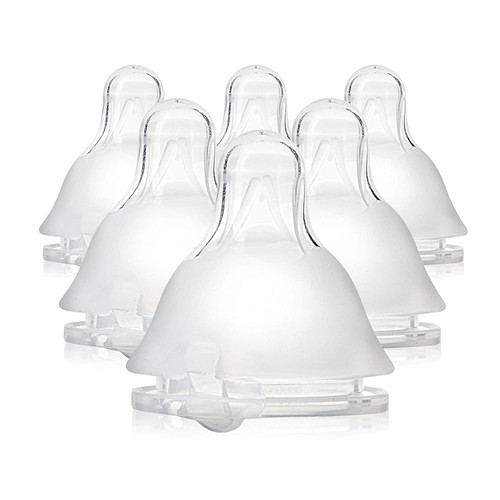Knowing when to change bottle nipple sizes is an important – and sometimes confusing – part of a comfortable and happy feeding experience for you and your baby.
While most bottles offer various nipple levels that are tied to an age range (for example, 3 months+), every infant has their own feeding style, which is not necessarily a reflection of their age or size.
How Will I Know When to Switch Bottle Nipple Sizes?
There is no “right” time to change your baby’s nipple level. Some babies are content using Level 1 throughout their feeding days, while more aggressive eaters may advance sooner than expected. Your baby will offer signs if the flow is not fast enough and it’s time to move up a level. Typical signs include baby:
- Taking longer to finish eating
- Becoming fussy or irritated while eating
- Falling asleep during feeding
With newborns, especially premature babies, the nipple flow rate can actually be faster than your infant can tolerate. If your baby is exhibiting any of these signs while eating, you may want to try a slower flow (lower level) nipple:
- Gulping
- Hard swallowing
- Coughing
- Choking
- Milk dripping from the mouth
- Refusing the bottle
To address all feeding stages and styles, Dr. Brown’s offers a series of bottle nipples with increasing flow rates. Dr. Brown’s nipple levels and corresponding ages are shown on the chart below. Read more to know when to change nipple sizes.
1 Review Hide Reviews Show Reviews
-
Transition Nipples
LOVE LOVE LOVE these for babies that need a shorter option - helps with leaking from sides of mouth & gagging










